

The Maine Botanical Garden has had some sculptures since we started going there. Since our last visit, they have added a themed sculpture exhibit: Guardians of the Seeds. The artist is Thomas Dambo, from Denmark. The trolls are made from reclaimed wooden pallets, roots from fallen trees, and similar low-impact resources. There are other trolls scattered throughout the world, as shown on this map.
The trolls at The Maine Botanical Garden are connected with the forest and protect the seeds. Each troll has a particular affinity: trunks, flowers, roots, branches, or leaves.
The first troll to greet visitors at the garden is Roskva, although she was actually the last one we spent any time with. The description of Roskva from the Maine Botanical Garden website is:
Stands for the trunks. Roskva is the heaviest, hardest, and strongest of the trolls. Every day, Roskva climbs towards the sky, and every year she grows taller and wider. If a troll forgets something, they can always ask Roskva—she counts the seasons and remembers everything that happens around her.
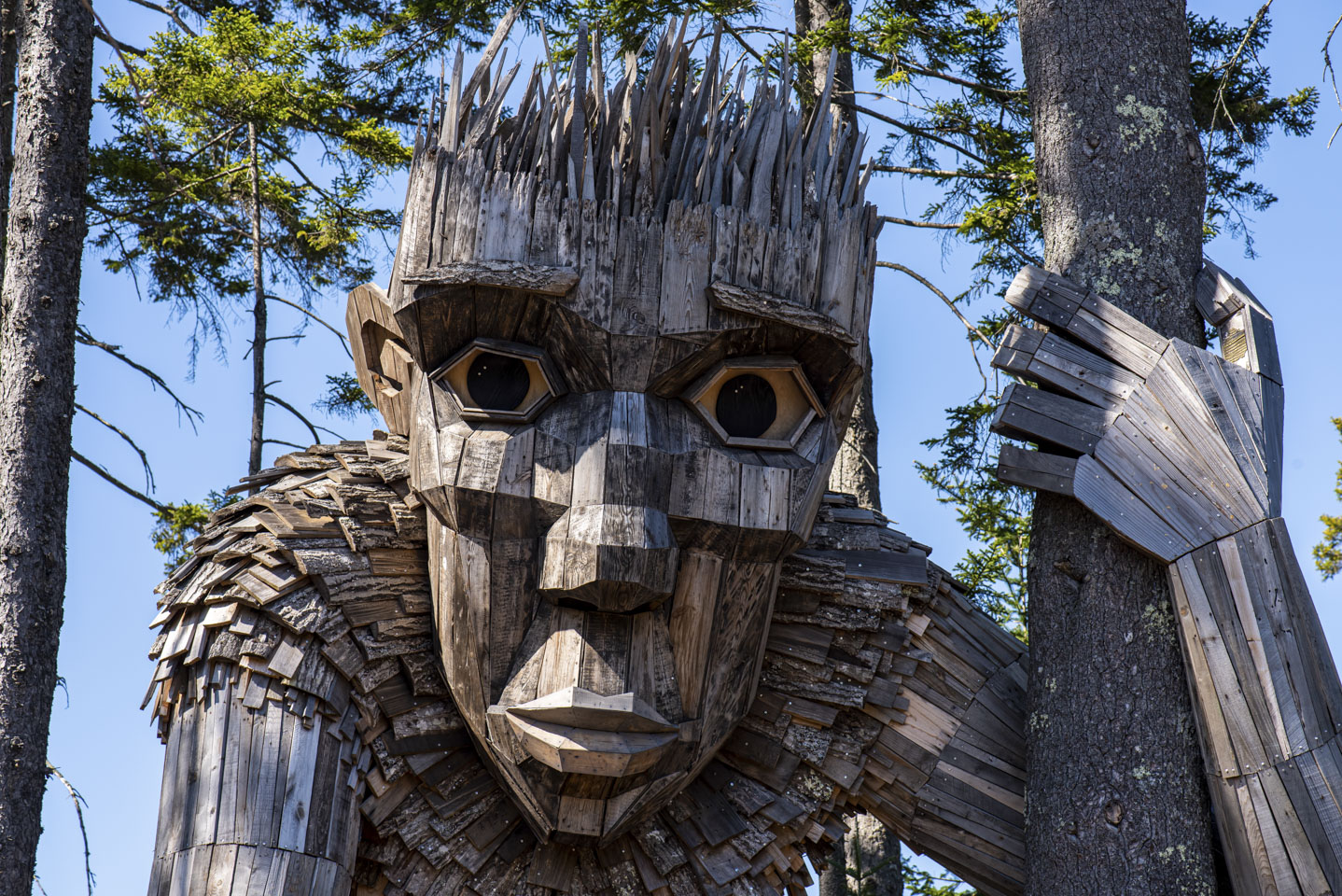
The trolls keep an eye on you. We were told that the artist was very deliberate in how he did the eyes in order to create this effect.
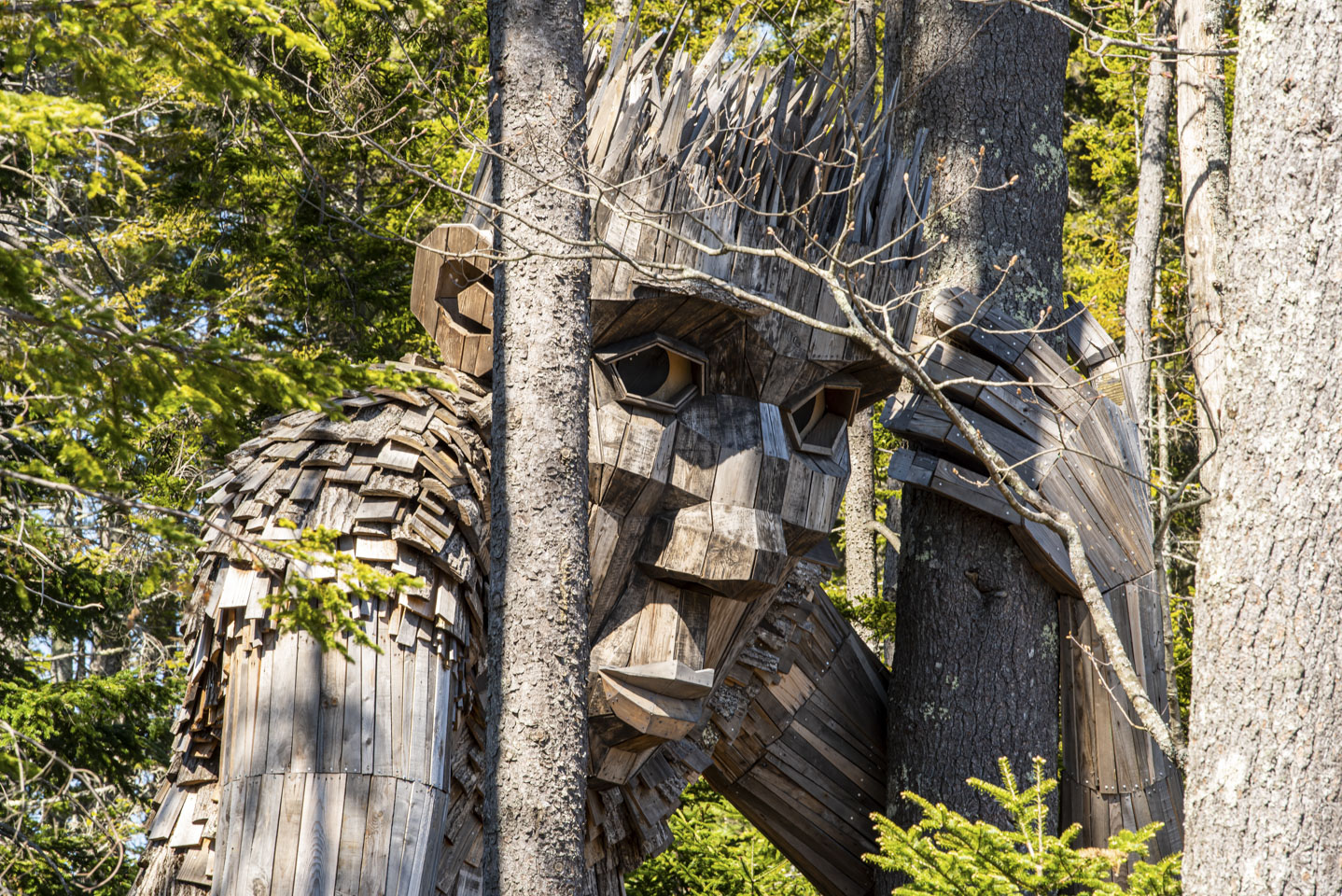
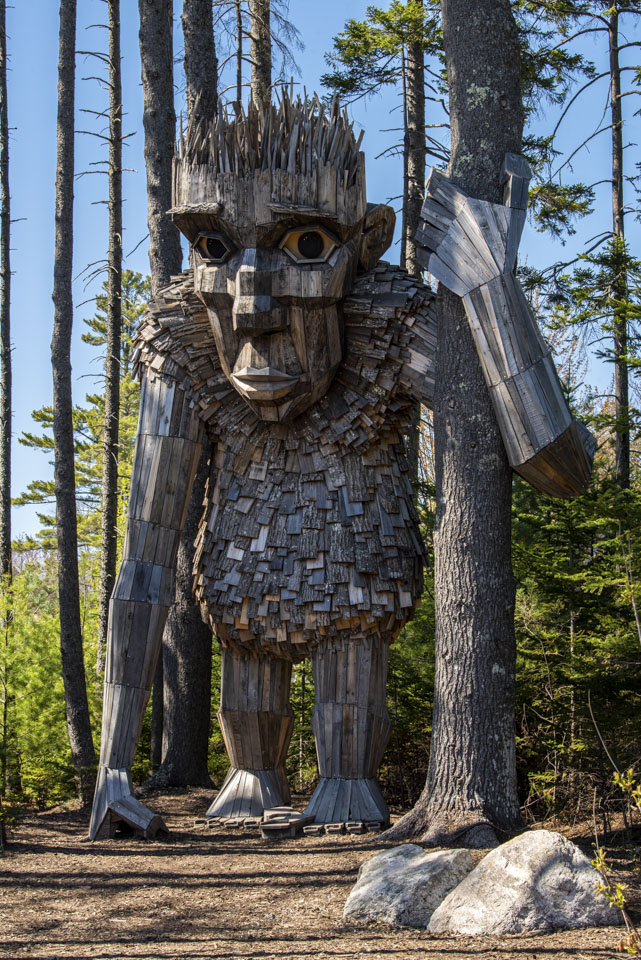
Here is a fuller view of Roskva’s location.
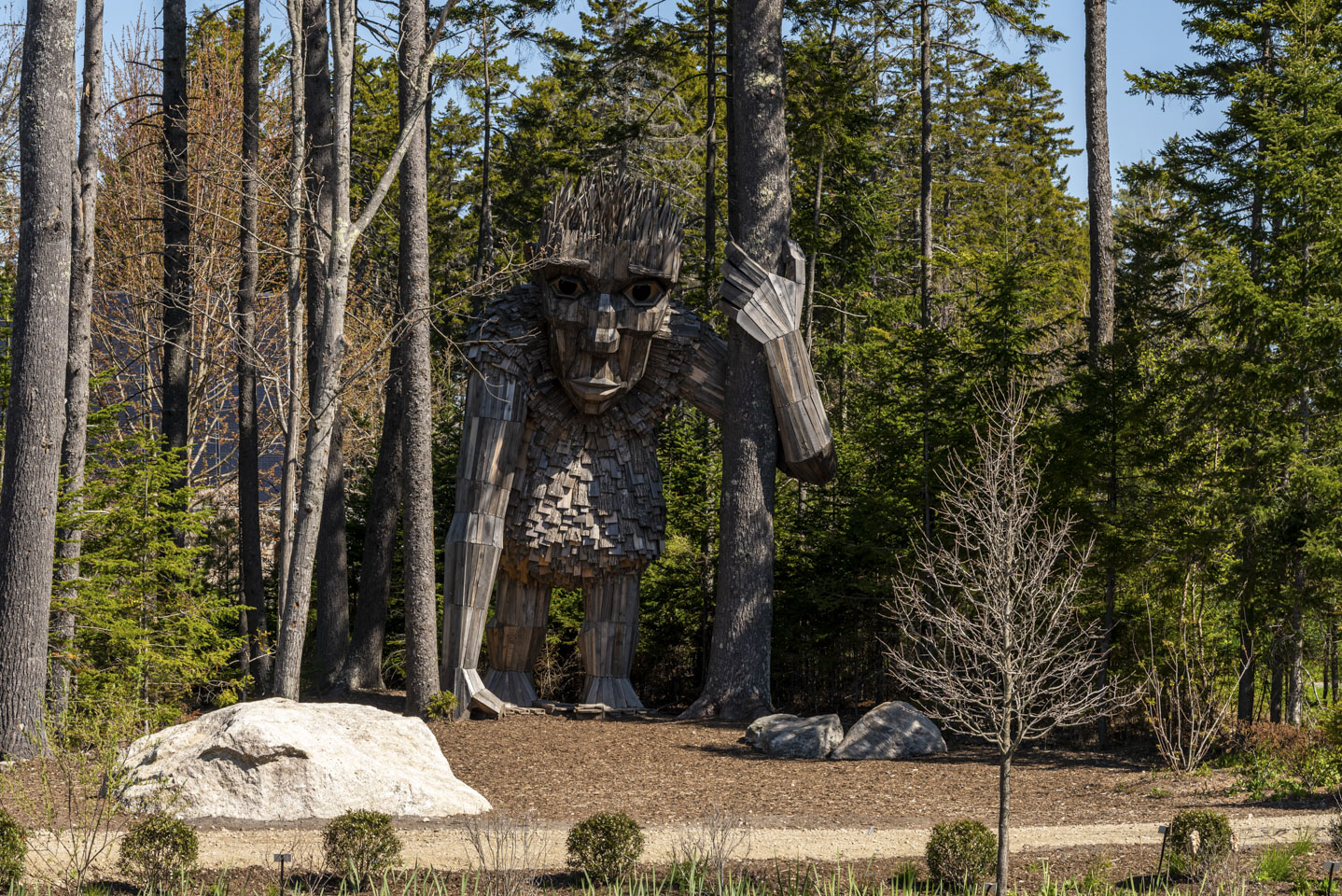
Lilja was the first troll we got close to, and she is absolutely irresistible. Their description:
Holds the scent of the flowers. Just last summer, Lilja came out from her hiding place. The youngest of the trolls, she’s still just a child. She loves the colors and the scents of the flowers and when bees and butterflies fly among branches.
How could you not love this face?
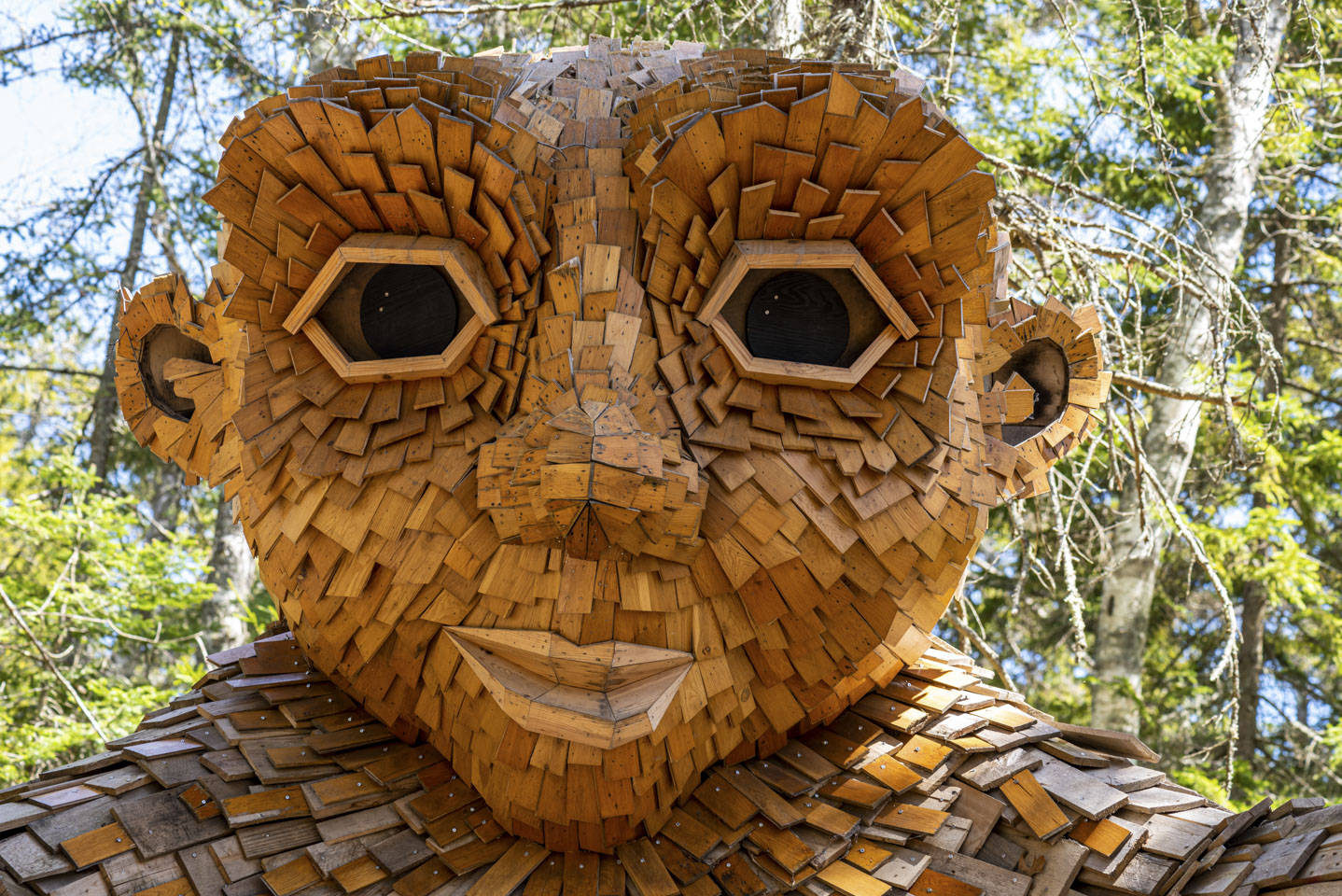
Here is a look at the full sculpture.
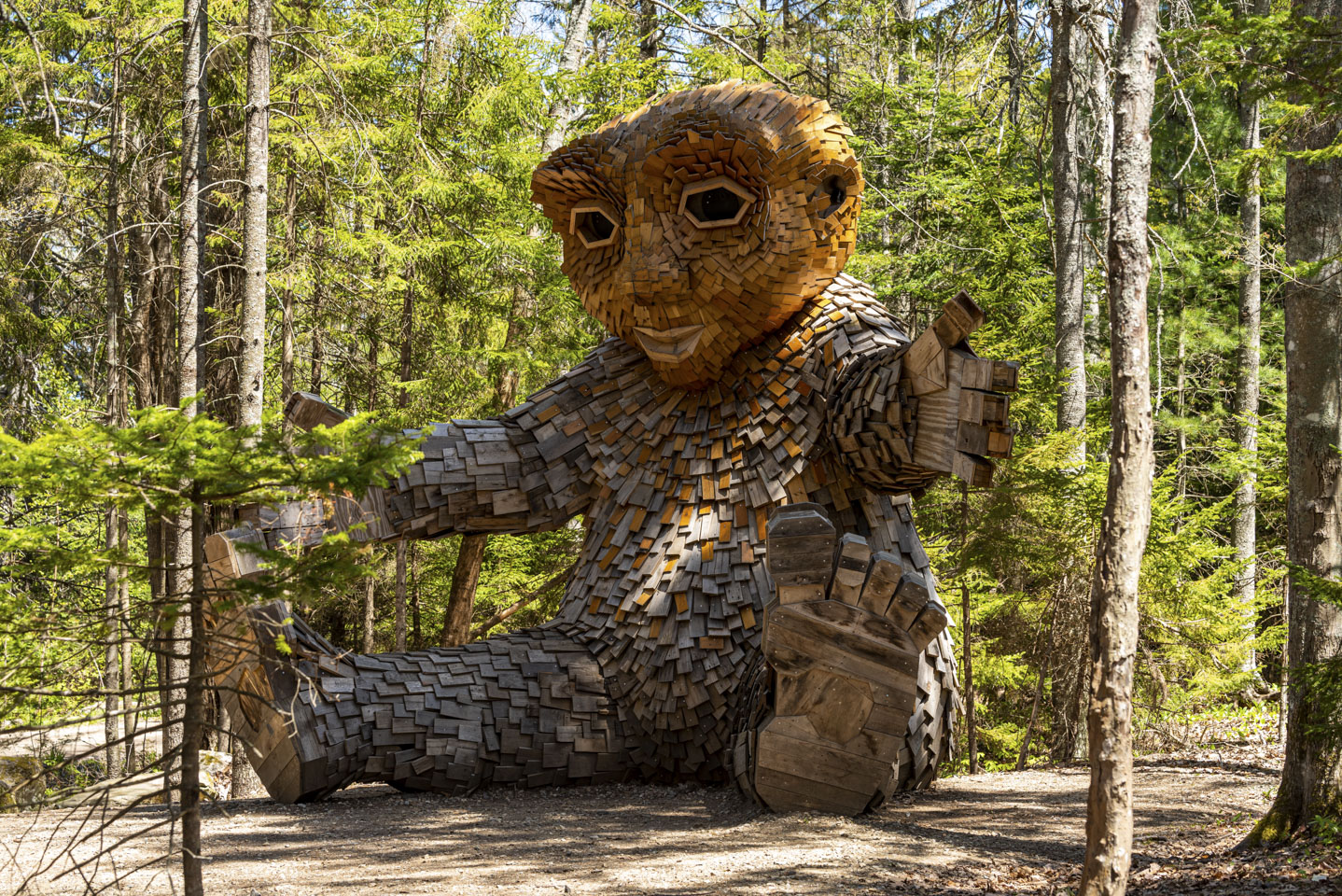
Looking more closely at one of the hands shows the various pieces of reclaimed wood are nailed to each other or to some internal supports.
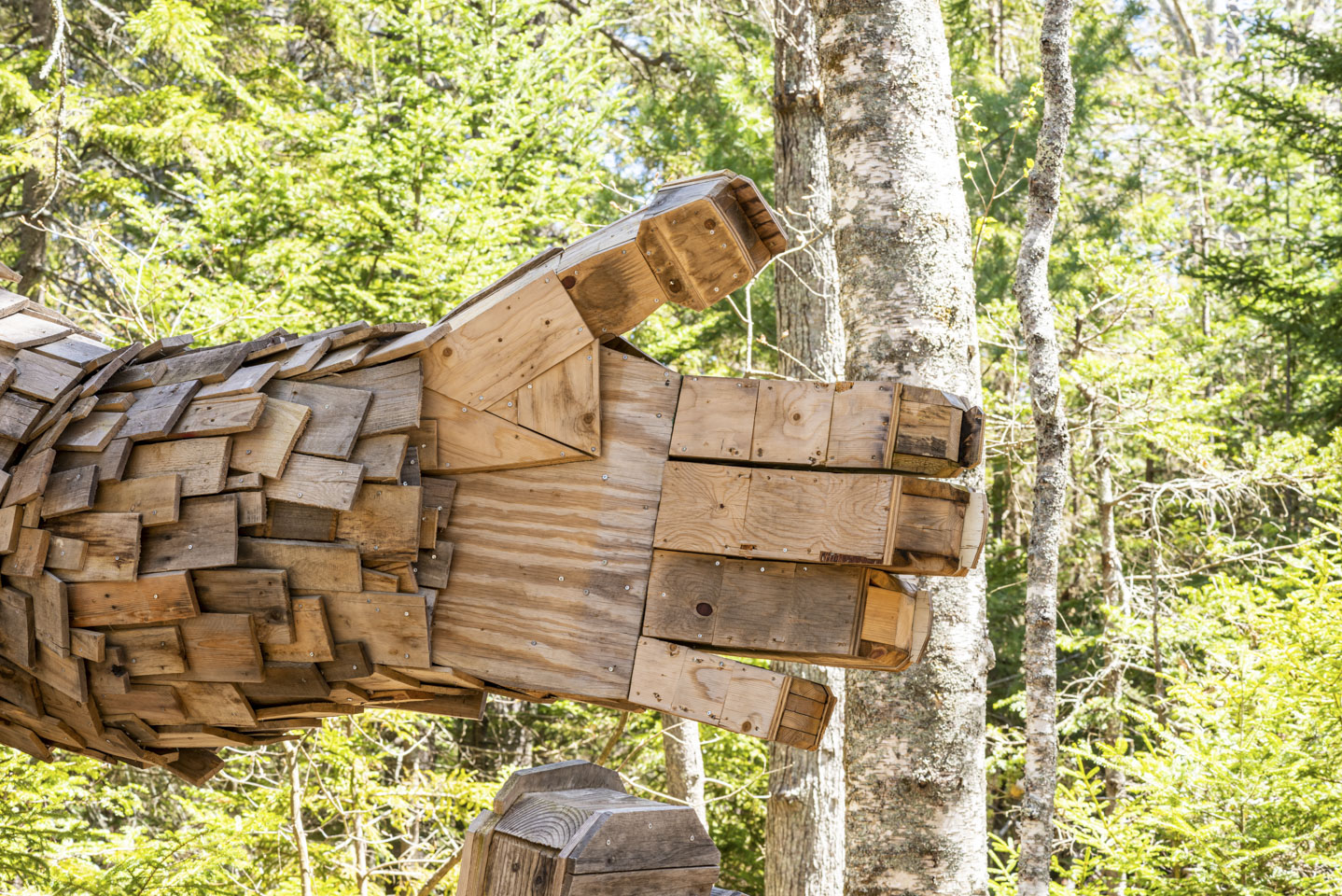
Sometimes you just need a hug. (You might need to look closely to notice Anne in front of Lilja.)
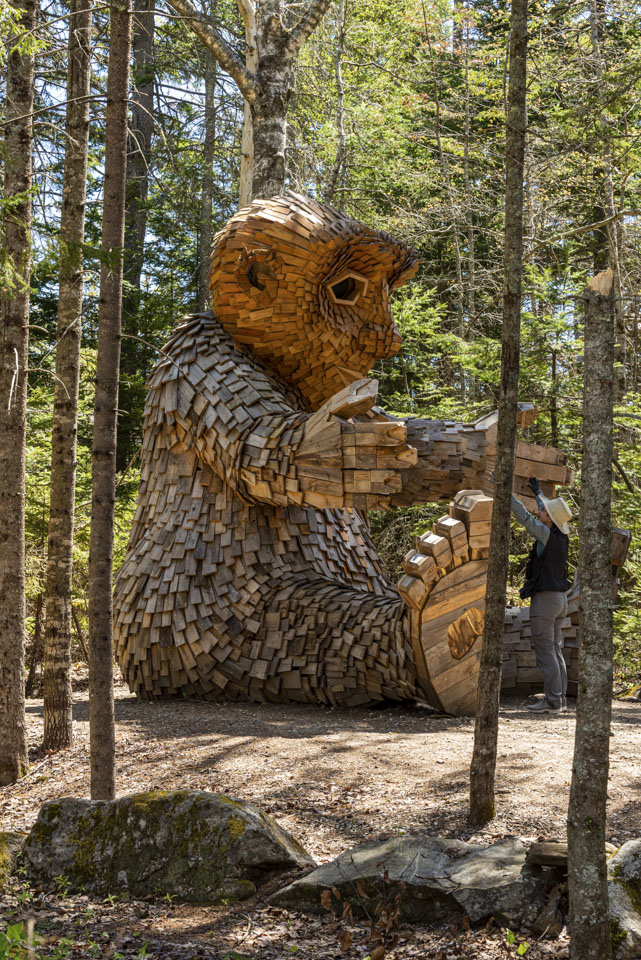
We next saw the troll Birk, to whom they give the following description:
Holds the roots. Birk is the wisest and most mysterious of the trolls. He hides in the shadows and listens to the whispers of the soil. He knows everything that happens in the wild, and every day he tells tales to all the other creatures of the forest.
If you didn't know about the troll sculptures, you might be a bit nervous catching a glimpse of this giant sitting on the other side of a ridge.
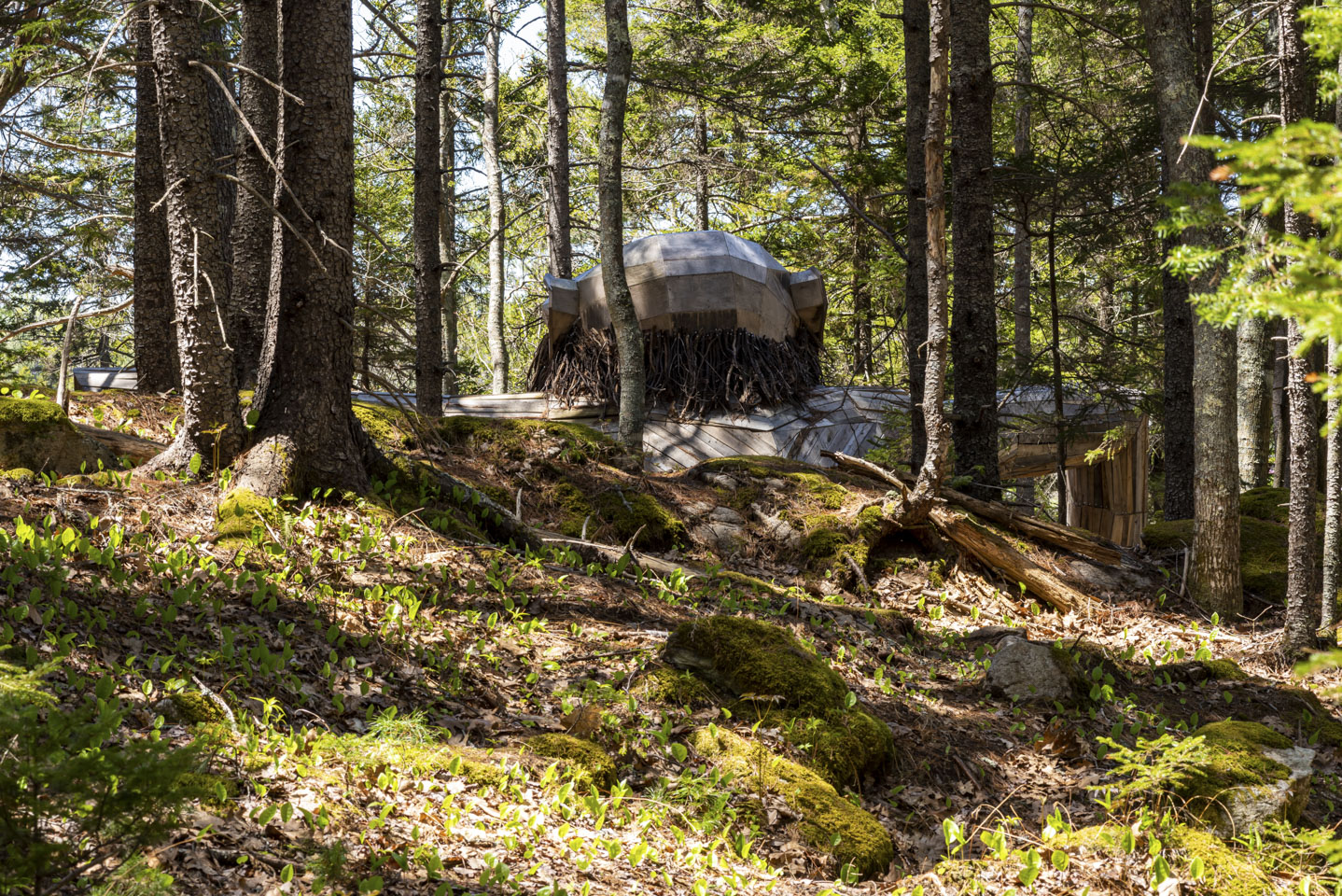
Here is an almost full view of Birk. He was a sprawling sculpture.
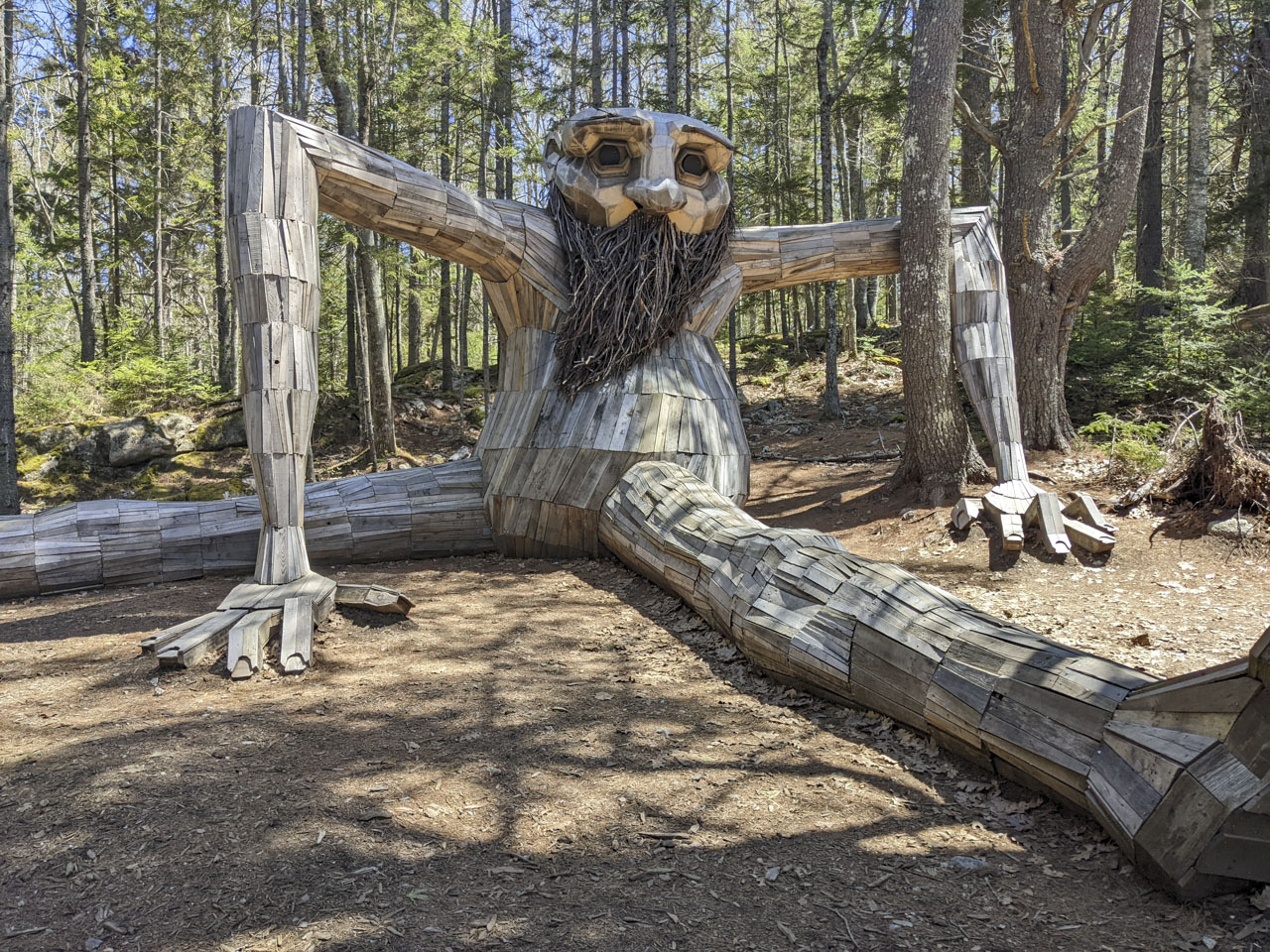
At most of the statues was a volunteer telling visitors about the project. This volunteer explained to us that the trolls were assembled in place, and that many of the supplies came from the botanical garden. The roots (such as used in Birk’s beard) and twigs were all gathered by Maine Botanical Garden volunteers from debris on the garden grounds. Because of these natural materials, they have even had some birds nesting in the statues over the winter (although we did not see any while we were there). In this next photograph, you can tell it was assembled in the final location by the way the arm wraps around a tree trunk.
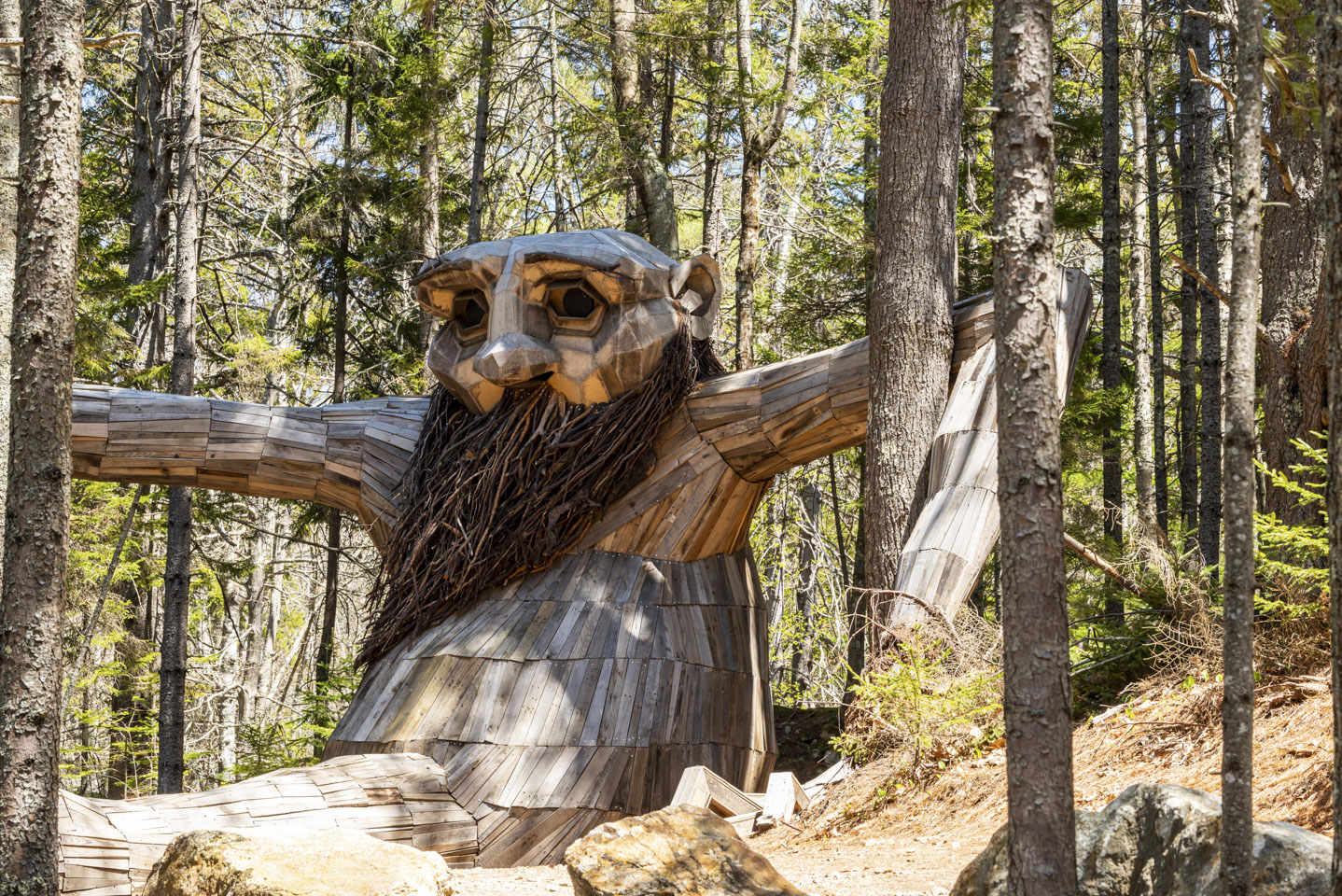
With this closer look, you can better see that the beard is made from the roots of upended trees.
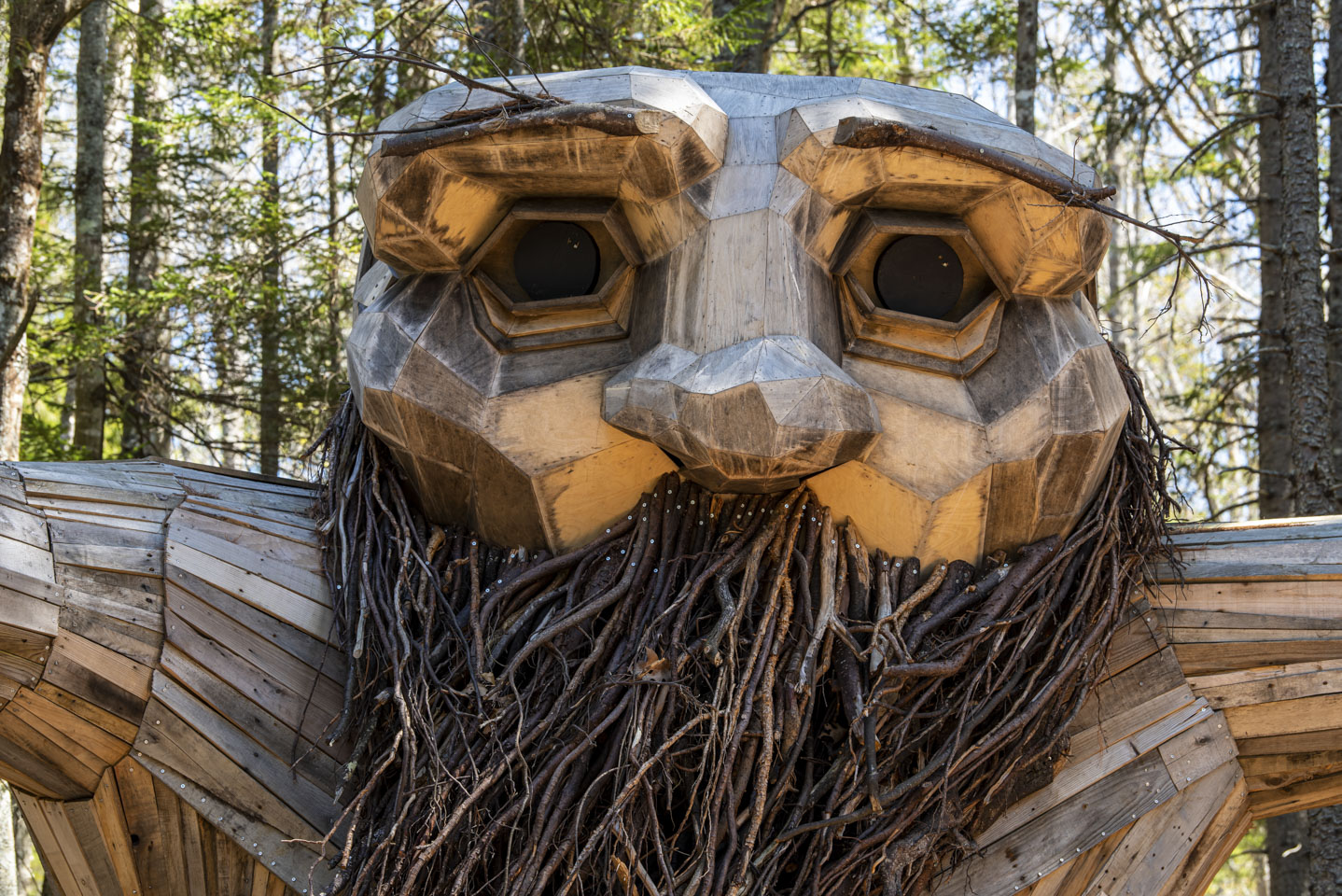
A closer look at Birk’s hand. It has a very different look that Lilja’s hand (seen above).
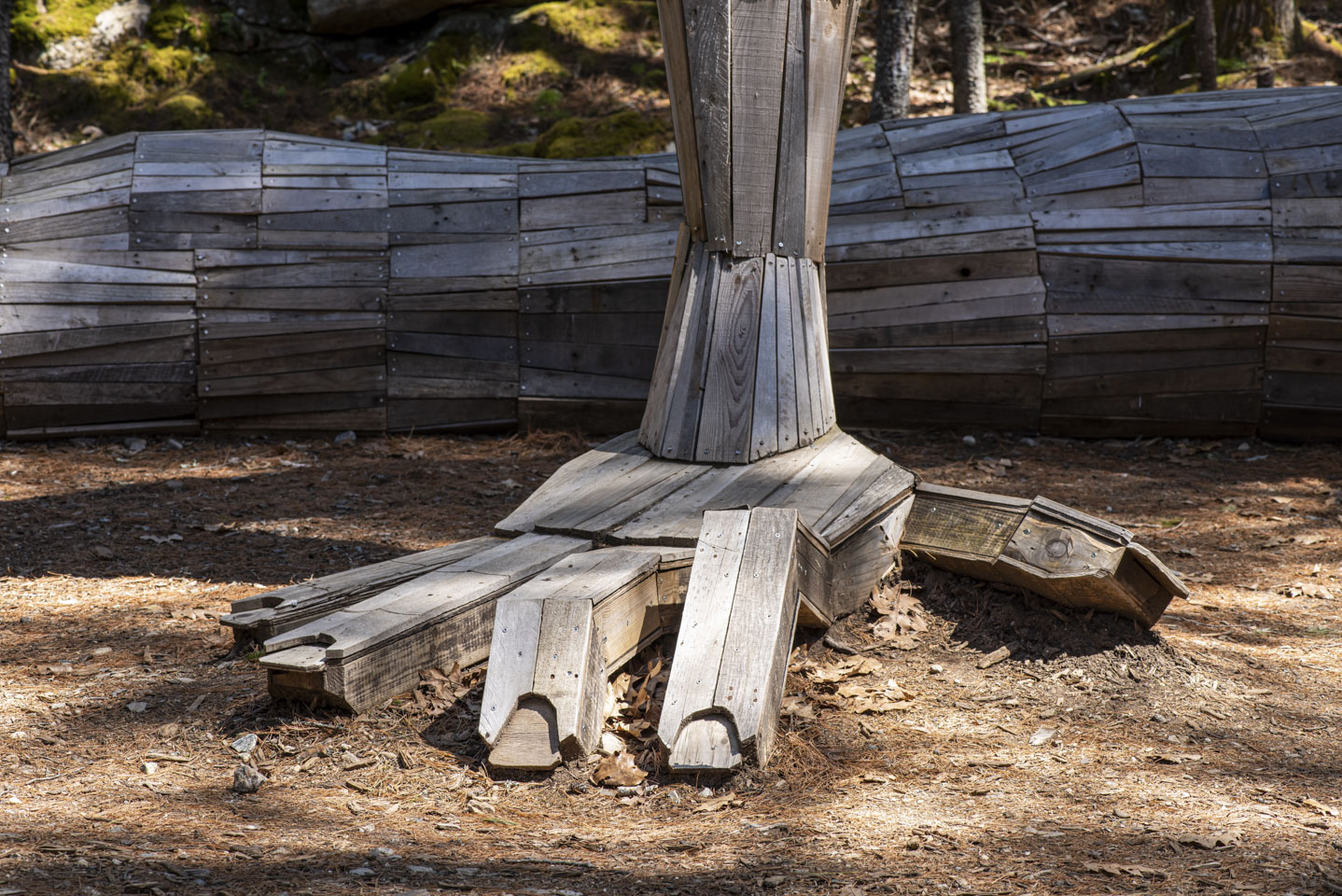
You are allowed to sit on the sculptures (but not climb them). Anne is posing kind of like Birk, although her arms are much to short to do it properly.
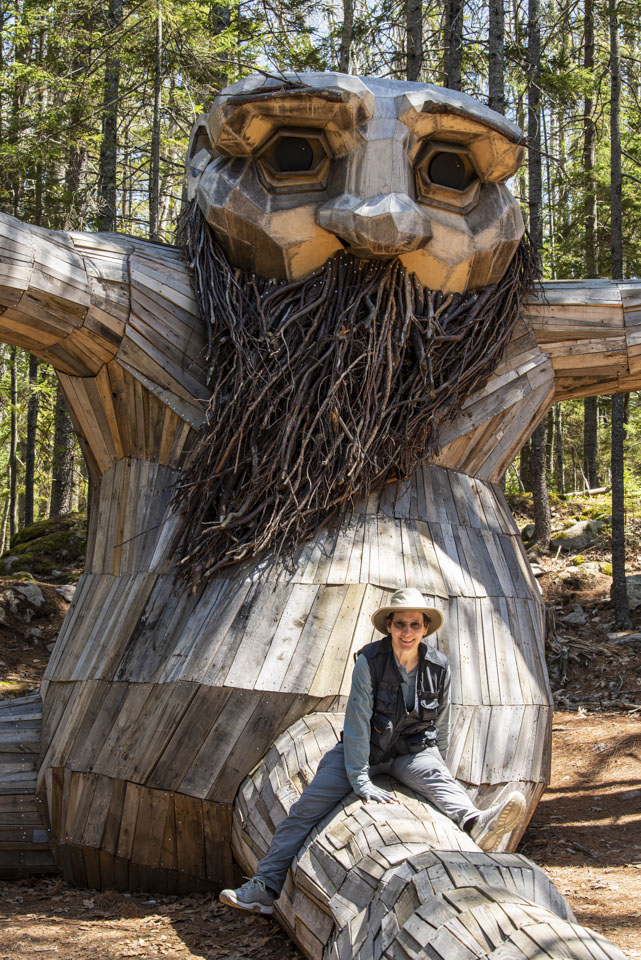
Søren looks very playful and like he is having a good time! Here is the Garden’s description:
Sticks up for the branches. Søren is a very curious troll; his head is always turning and twisting, searching for places ever higher. He dreams about drifting around on a cloud in the sky, and when the wind is blowing, he loves to celebrate with a dance.
Again, the eyes are carefully done so that you can ‘make eye contact’ even from different spots.
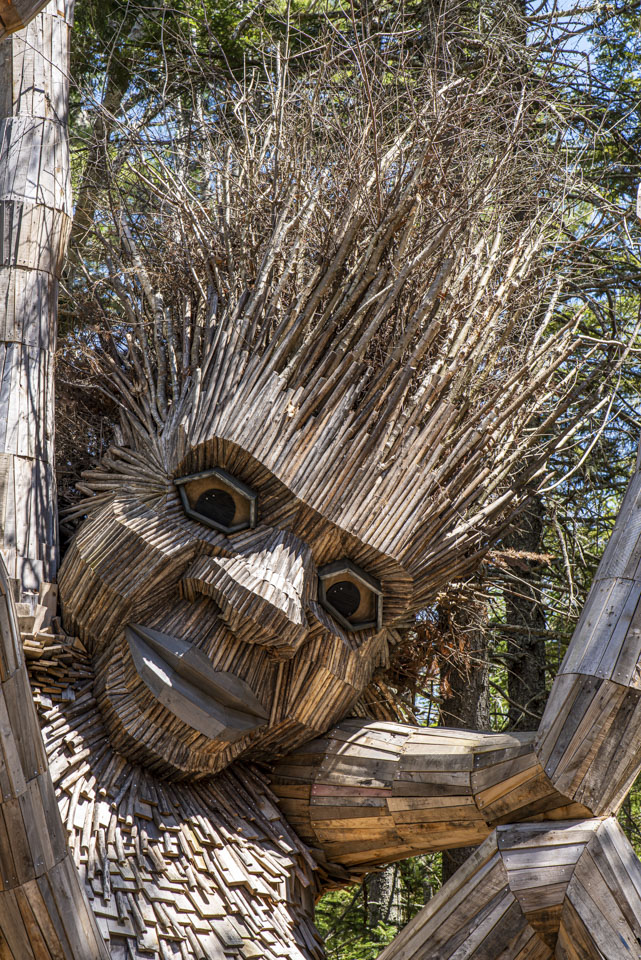
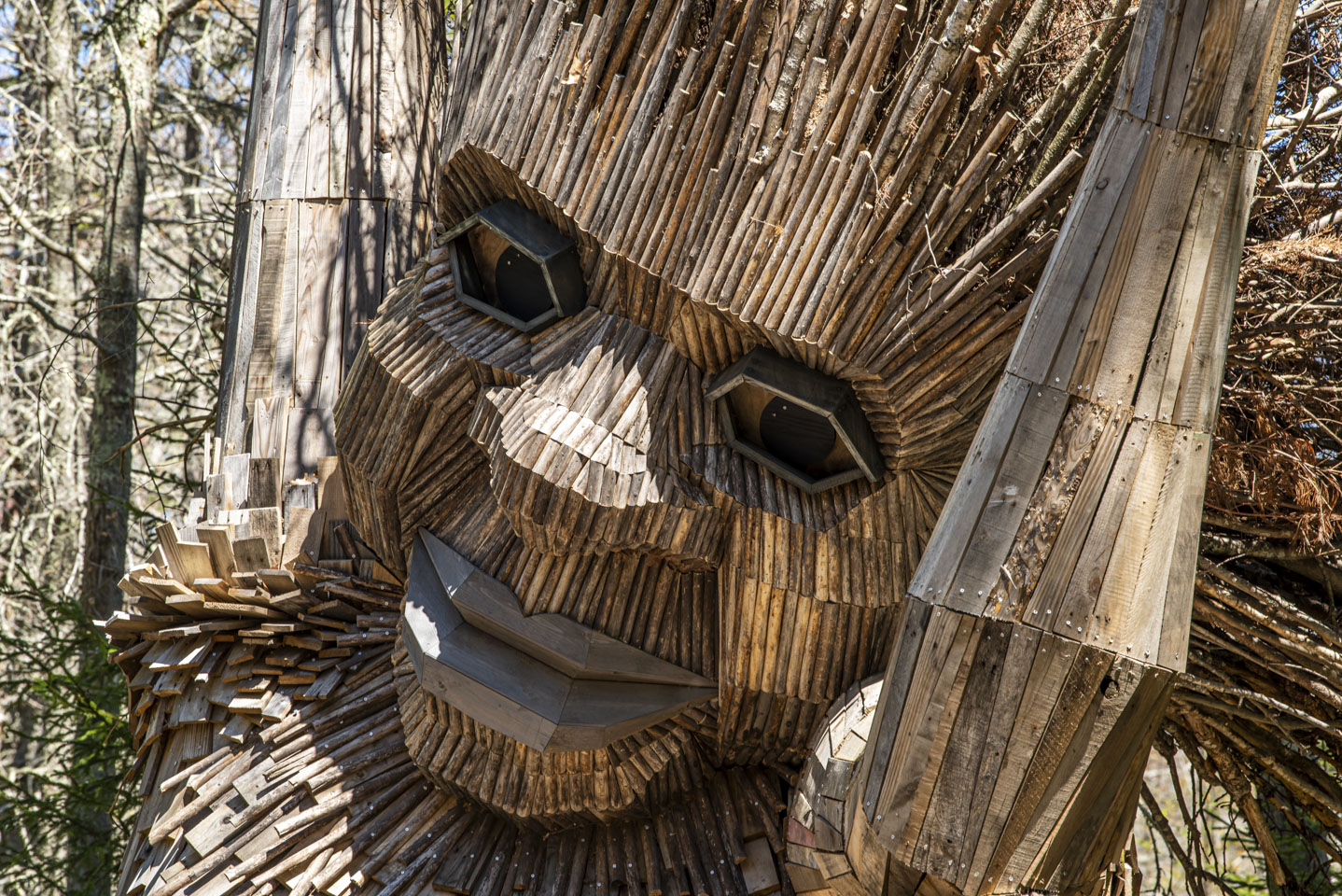
It is a requirement to try to do the Søren pose. Put your cursor over the next photograph.
A hand and foot together:
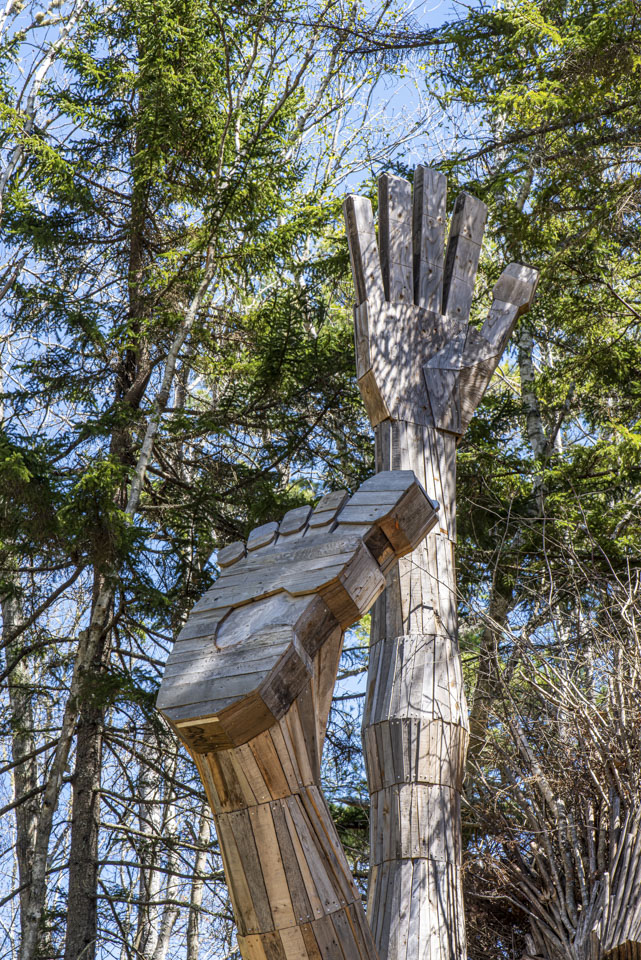
Here are Paul and Anne together with Søren. The volunteer at this statue took a picture of us.
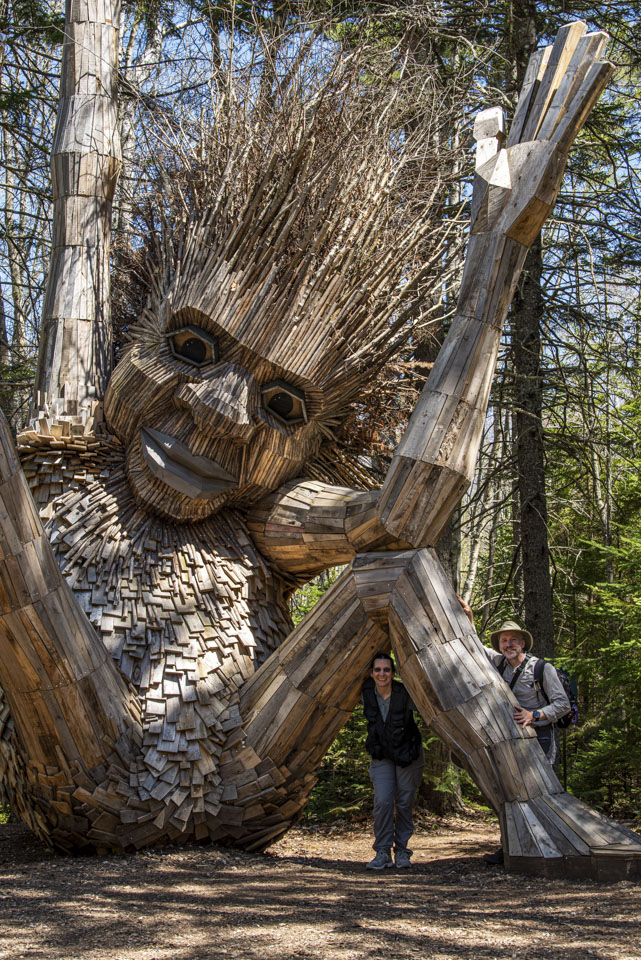
Gro was the last troll we encountered. Their description:
Smiles with the leaves. Gro is the wanderer. Every fall she disappears, but the trolls are not worried because every spring she returns to the forest. On her return, Gro walks around to make sure every friend of hers is fed. After hurrying to catch a few sunbeams and a handful of raindrops, she creates a feast for the forest.
Our first view of Gro was from the bottom of a hill.
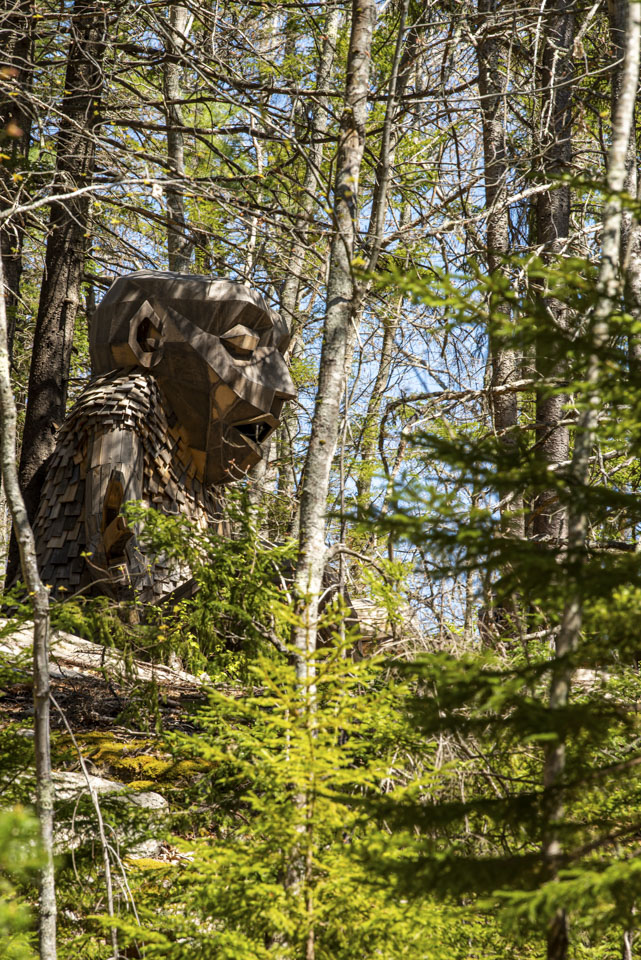
Gro looks very meditative, soaking up the sunshine just like leaves do.
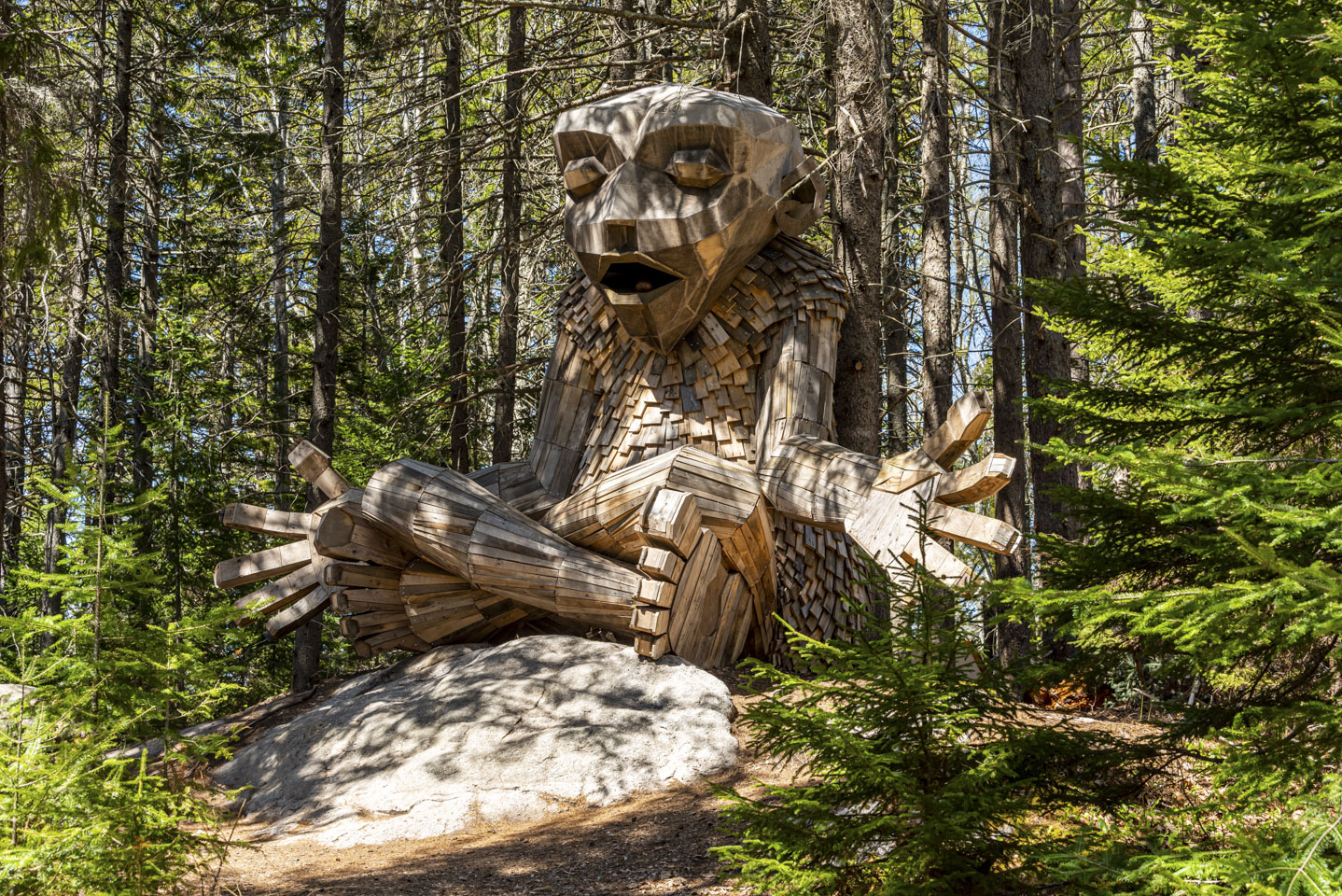
The face.
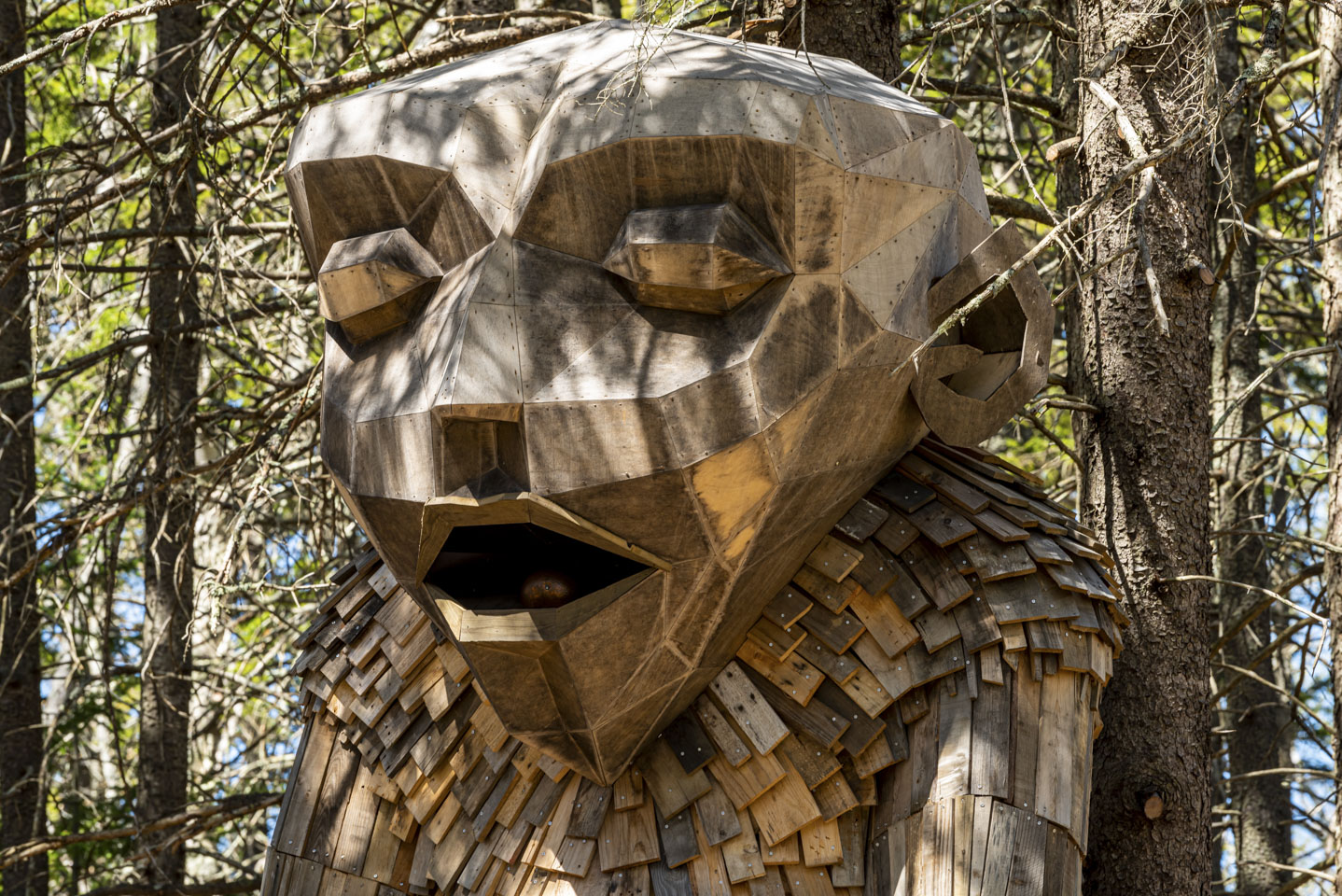
And a couple close-up photographs, one of the ear and one of the hand.
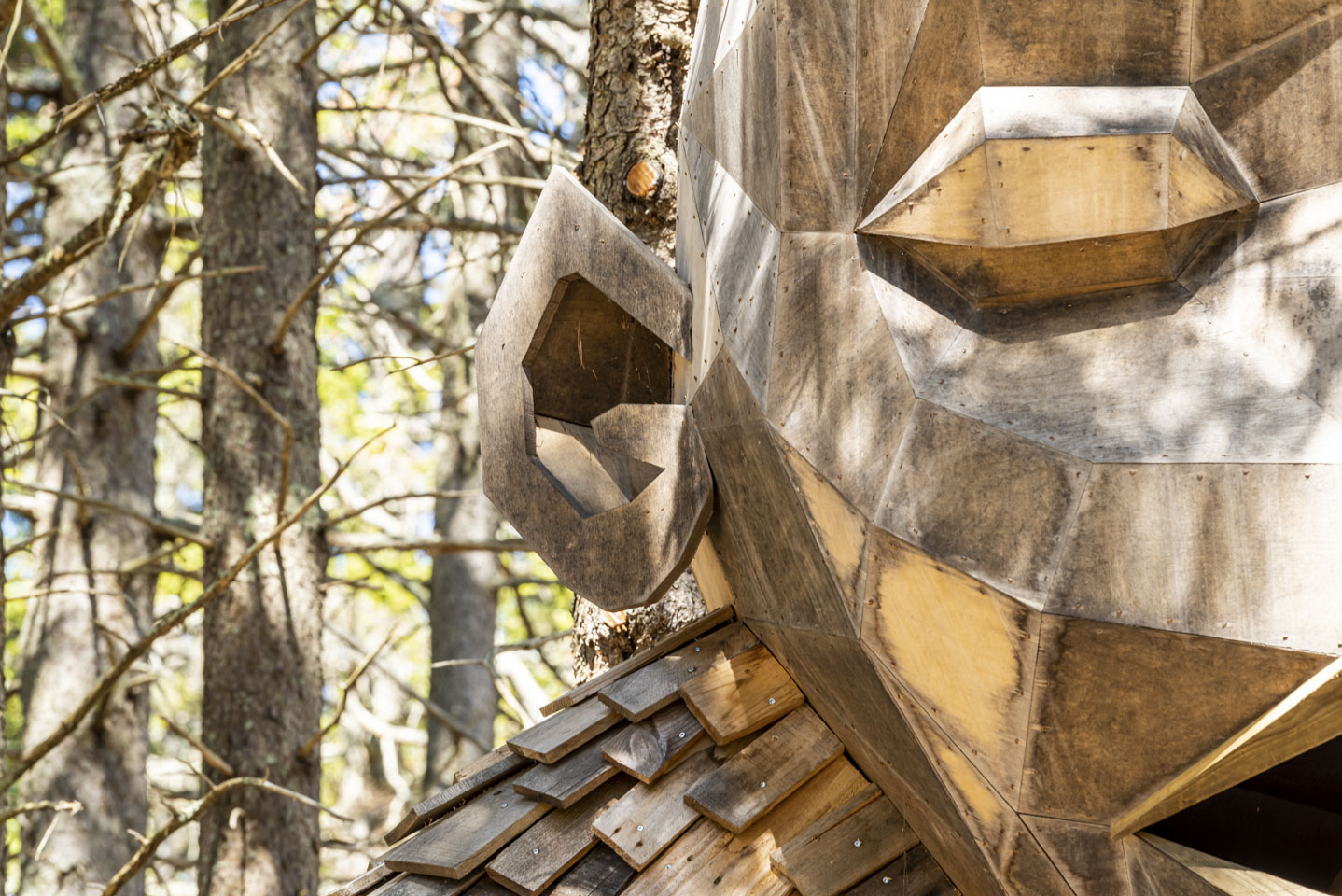
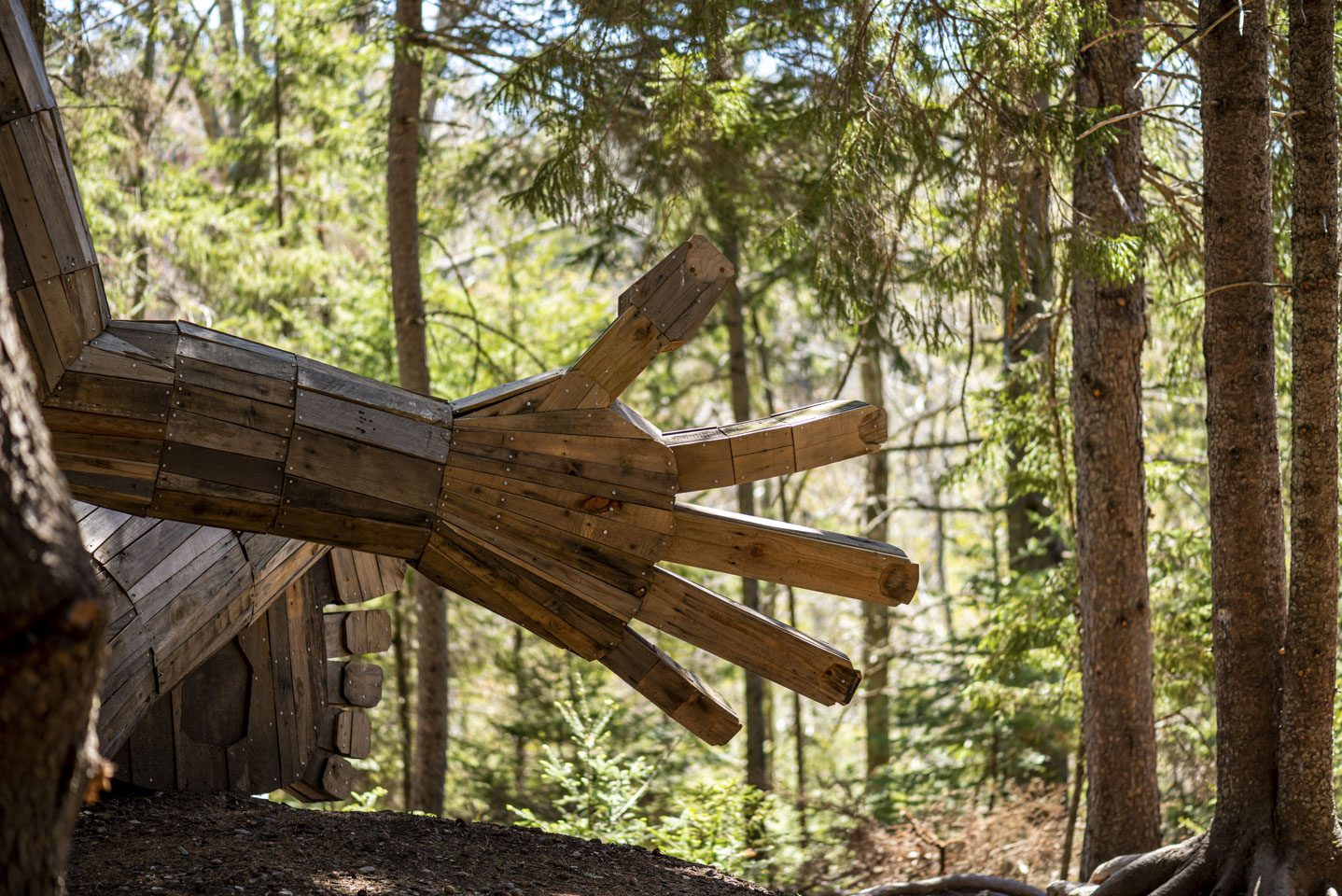
You might recall, from the top of the page, that this exhibit is called Guardians of the Seeds. The trolls are trying to save the forests of Maine, so they have collected 10 golden seeds and put them in a ‘hidden’ grove in the woods. Each seed has a very much larger than life statue representing it.
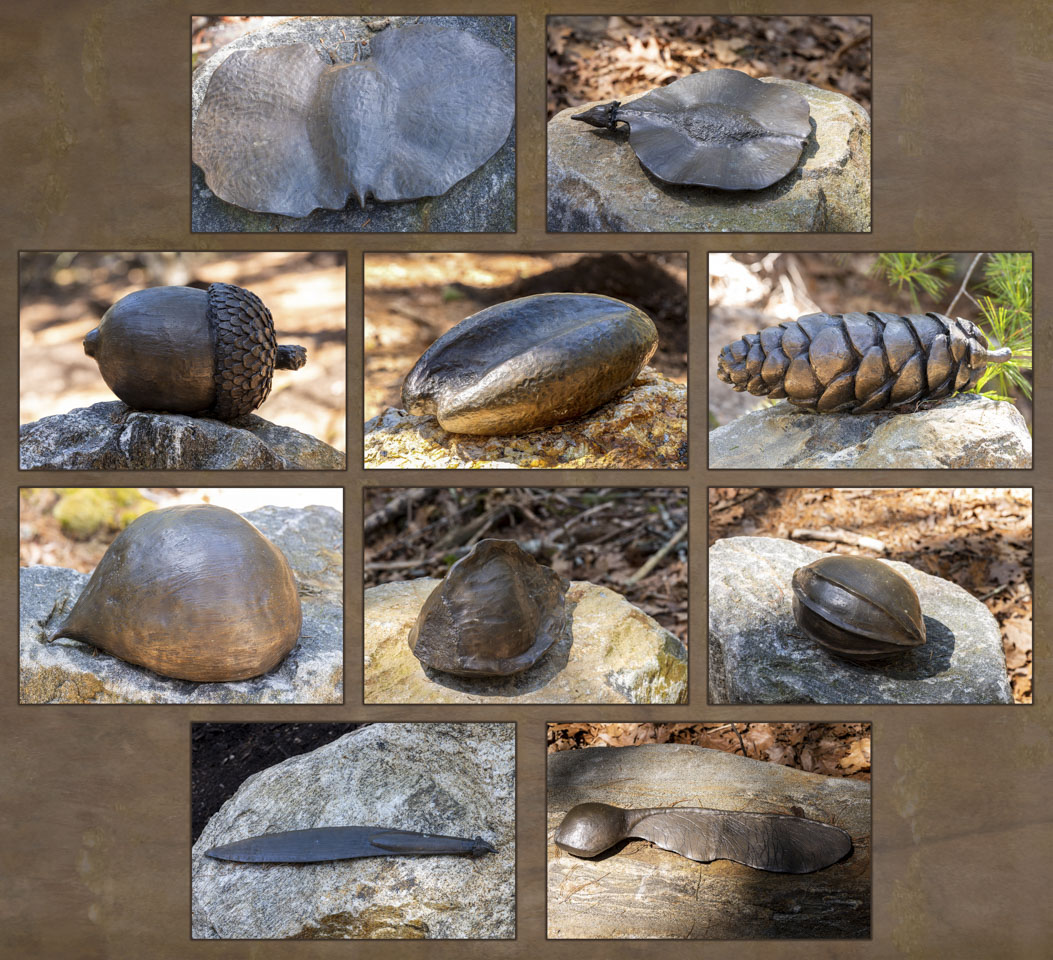
The sign there gave a description of each, which we have written out below. In the order pictured above, left to right and top to bottom:
Paper Birch: These white trees cast slender shadows across the moist soil they prefer, found along streams, lakes, and ponds. Their bark has been used for everything from toothpicks to canoes.
American elm: Forested cities, graced by elms, were forever changed when Dutch elm disease, a fungus spread by bark beetles, swept across the country killing tens of millions of trees.
Northern red oak: This oak is the breadbasket of the forest, feeding over five hundred different caterpillars with its leaves and nourishing everything from weevils to squirrels to black bears with its acorns.
Witch hazel: This small understory tree bewitchingly buds, blooms, and bears seeds all at the same time in mid-autumn.
Red spruce: This iconic Maine tree is a long-lived evergreen with sharp, spiny needles, a champion of even the poorest and thinnest of soils.
American Chestnut: These towering trees once made up a quarter of all Eastern forests before the spread of the chestnut blight fungus drove populations nearly to extinction.
American beech: Millions of this grand, slow-growing tree have been lost since the 1920s due to beech bark disease, and many more are now threatened by the recently discovered beech leaf disease.
Black cherry: In late spring, Maine's largest of the native cherries begins to bloom, and by late summer, its cheery white flowers ripen into berries enjoyed by all kinds of wildlife.
White ash: The emerald ash borer, an invasive beetle, not only threatens the white ash trees in our forests, but also the basketmaking tradition that is a central part of Wabanaki art and culture.
Sugar maple: The sap of sugar maples isn't only used by humans; it is an important source of early spring sugar for birds like yellow-bellied sapsuckers and butterflies like mourning cloaks.
Continued to page 2 of the Gardens.
Updated June 2022